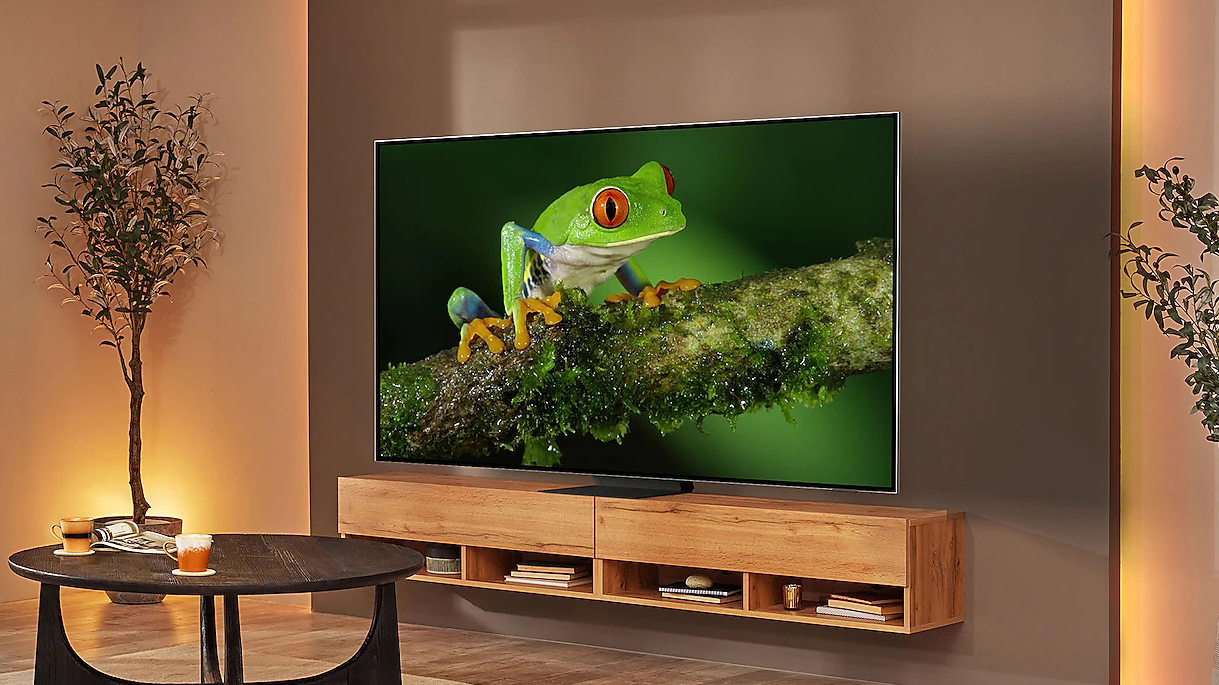I tested Samsung’s cheaper 8K TV and I’m not sure I see the point of it
Not when it falls short of cheaper 4K TVs in other ways

On paper, the Samsung QN800B is a television technology tour de force. Mini-LED! 8K resolution! Surely it’s at the cutting edge of what the best 8K TVs can be in 2022? Well, yes. But also, no.
Mini-LED technology (which Samsung insists on calling ‘Neo QLED’ in its TVs) is no stranger to TechRadar – we’ve discussed its pros and cons a few times, and it’s fair to say the ‘pros’ generally outweigh the ‘cons’. But in the case of the 65-inch QN800B, either it’s not quite as effective in this implementation or I'm becoming blasé. I’m not contractually obliged to say it’s the former – but nevertheless that’s what I think is the case, based on my experience.
The way the QN800B lights its screen is not as effective, as targeted or as convincing as that of the Samsung QN85B 4K Neo QLED (which I spent a lot of time with). That screen was able to deliver pretty accurate backlighting even in the most testing circumstances – scrolling white text on a black background, say.
Here, there’s noticeably more blooming around bright highlights like this, and a definite tendency for the screen to unilaterally reduce its peak brightness when it encounters very small brights in otherwise-dark scenes – presumably to keep haloing to a minimum. The backlighting itself is less even on the QN800B than on the QN85B – it’s mildly, but definitely, darker towards the center of the screen than it is in the corners.
And remember that the QN85B is Samsung cheapest Mini-LED TV from 2022 – and when the Black Friday TV deals roll around, odds are it'll be even cheaper.

That attention-grabbing 8K resolution is a double-edged sword, too. Oh, there’s absolutely no denying that this resolution looks wonderful when it’s given some native 8K content to display – it’s just that there’s very little native 8K content about, and what is available isn’t exactly what you’d call compelling viewing. Not unless you like to see flowers blooming for 40 minutes at a time, anyway.
And it’s equally true to say the Samsung QN800B's an extremely capable upscaler of 4K content to match its 8K resolution – so when you’re sitting an appropriate distance from the screen and watching some native 4K stuff, the way the QN800B performs is seriously impressive. There’s minimal picture noise, impressive motion-tracking, good detail levels and all the other stuff everyone associates with the best TVs.
Sign up for breaking news, reviews, opinion, top tech deals, and more.
It’s when you step down from there that the QN800B starts to betray itself. No one exists exclusively on a diet of 4K content, do they? There’s always something on a streaming service that’s worth watching that's in HD, meaning that you're getting 1080p resolution at best. But where a 4K screen is having to work hard to make 2,073,600 pixel’s-worth of information fit its 8,294,400 pixels, the QN800B has to go from two million to over 30 million pixels to fill its screen – it's basically inventing all that picture information. And the Samsung demonstrably struggles to do so with any conviction.
That’s hardly surprising – but it's not great that even in 2022, several years after their launch, I'm left to wonder exactly what the point of an 8K display is, beyond future-proofing for a day that may conceivably never come.

Simon Lucas is a senior editorial professional with deep experience of print/digital publishing and the consumer electronics landscape. Based in Brighton, Simon worked at TechRadar's sister site What HiFi? for a number of years, as both a features editor and a digital editor, before embarking on a career in freelance consultancy, content creation, and journalism for some of the biggest brands and publications in the world.
With enormous expertise in all things home entertainment, Simon reviews everything from turntables to soundbars for TechRadar, and also likes to dip his toes into longform features and buying guides. His bylines include GQ, The Guardian, Hi-Fi+, Metro, The Observer, Pocket Lint, Shortlist, Stuff T3, Tom's Guide, Trusted Reviews, and more.